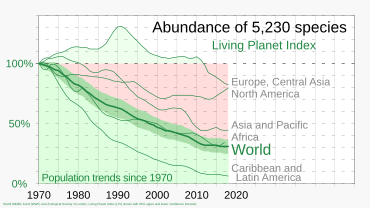3.194
3.194
Herpes Virus Linked to Long-Term Brain and Neurological Problems
Summary: A new study reveals that herpes simplex virus-1 (HSV-1), commonly known for causing cold sores, can travel through the nasal cavity directly to the brain, causing severe and lasting neurological symptoms. In animal experiments, nasal HSV-1 infection led to persistent neurological dysfunction, including anxiety and cognitive impairment.
The researchers identified heparanase, a cellular enzyme, as a critical factor in allowing HSV-1 to cause severe, lasting neurological damage. Blocking the activity of this enzyme significantly reduced neurological damage in infected animals, highlighting a possible therapeutic target.
#
Essential India
Essential India helps you understand a vast and complicated country that will increasingly shape the future. India has the world’s biggest population and in recent years has had one of its fastest-growing economies with a large and thriving business and tech scene. It is the world’s biggest democracy, an almost miraculous achievement for such a poor and diverse country—even if its politics has grown increasingly authoritarian under Narendra Modi. India is emerging as an important player on the geopolitical stage, in hock neither to China nor America, and as a self-styled leader of the global south. Each week our correspondents will share their insights on the big Indian news and business developments, keeping you in the loop with everything from cricket to technology, social trends and electoral politics.
# MAGNETISM
Good question! I tried to work this out from the ripe age of 17, but it took me until my fourth year of undergraduate until I understood it fully. Here is the more 'technical' answer on where it comes from and why James Clerk Maxwell managed to unify it with the electric force:
One way to think about magnetism is that it is the 'relativistic correction' to the electrostatic force. This is because all information (including the spread/continual update of electric fields as charges move) can not travel faster than the speed of light.
Thus, only moving charge particles feel a magnetic force in a m
L'indice planète vivante (IPV, en anglais living planet index ou LPI) est un indicateur d'état de la biodiversité, utilisé pour l'évaluation environnementale, en particulier par l'ONU.

C'est un indice composite1 construit sur les tendances observées chez un grand nombre de populations d'espèces de vertébrés du monde entier (les vertébrés sont parmi les mieux connus des taxons animaux2) ; il vise à mesurer les changements temporels d'état de la biodiversité dans le monde3. Il consiste dans la moyenne des taux de décroissance de la population de nombreuses espèces de vertébrés témoin, par rapport à celle de l'année 1970.
#

Exercise Boosts Memory Across All Ages
Summary: New research finds that nearly any form of exercise can enhance brain function and memory across the lifespan. This large-scale umbrella review analyzed data from over 258,000 participants and found that low- to moderate-intensity activities like yoga, Tai Chi, and even exergames significantly benefit cognition.
Children and teens saw the greatest memory gains, while people with ADHD experienced notable improvements in executive function. The findings highlight that even small bursts of movement can have profound cognitive effects, making exercise an accessible and essential brain-health strategy for everyone./.../
|
FROM THE ARCHIVE | The Healing Power of Gardens: Oliver Sacks on the Psychological and Physiological Consolations of Nature
“I work like a gardener,” the great painter Joan Miró wrote in his meditation on the proper pace for creative work. It is hardly a coincidence that Virginia Woolf had her electrifying epiphany about what it means to be an artist while walking amid the flower beds in the garden at St. Ives. Indeed, to garden — even merely to be in a garden — is nothing less than a triumph of resistance against the merciless race of modern life, so compulsively focused on productivity at the cost of creativity, of lucidity, of sanity; a reminder that we are creatures enmeshed with the great web of being, in which, as the great naturalist John Muir observed long ago, “when we try to pick out anything by itself, we find it hitched to everything else in the universe”; a return to what is noblest, which means most natural, in us. There is something deeply humanizing in listening to the rustle of a newly leaved tree, in watching a bumblebee romance a blossom, in kneeling onto the carpet of soil to make a hole for a sapling, gently moving a startled earthworm or two out of the way. Walt Whitman knew this when he weighed what makes life worth living as he convalesced from a paralytic stroke: “After you have exhausted what there is in business, politics, conviviality, love, and so on — have found that none of these finally satisfy, or permanently wear — what remains? Nature remains; to bring out from their torpid recesses, the affinities of a man or woman with the open air, the trees, fields, the changes of seasons — the sun by day and the stars of heaven by night.”/.../
|
|
'Totally unexpected' galaxy discovered by James Webb telescope defies our understanding of the early universe Story by

















